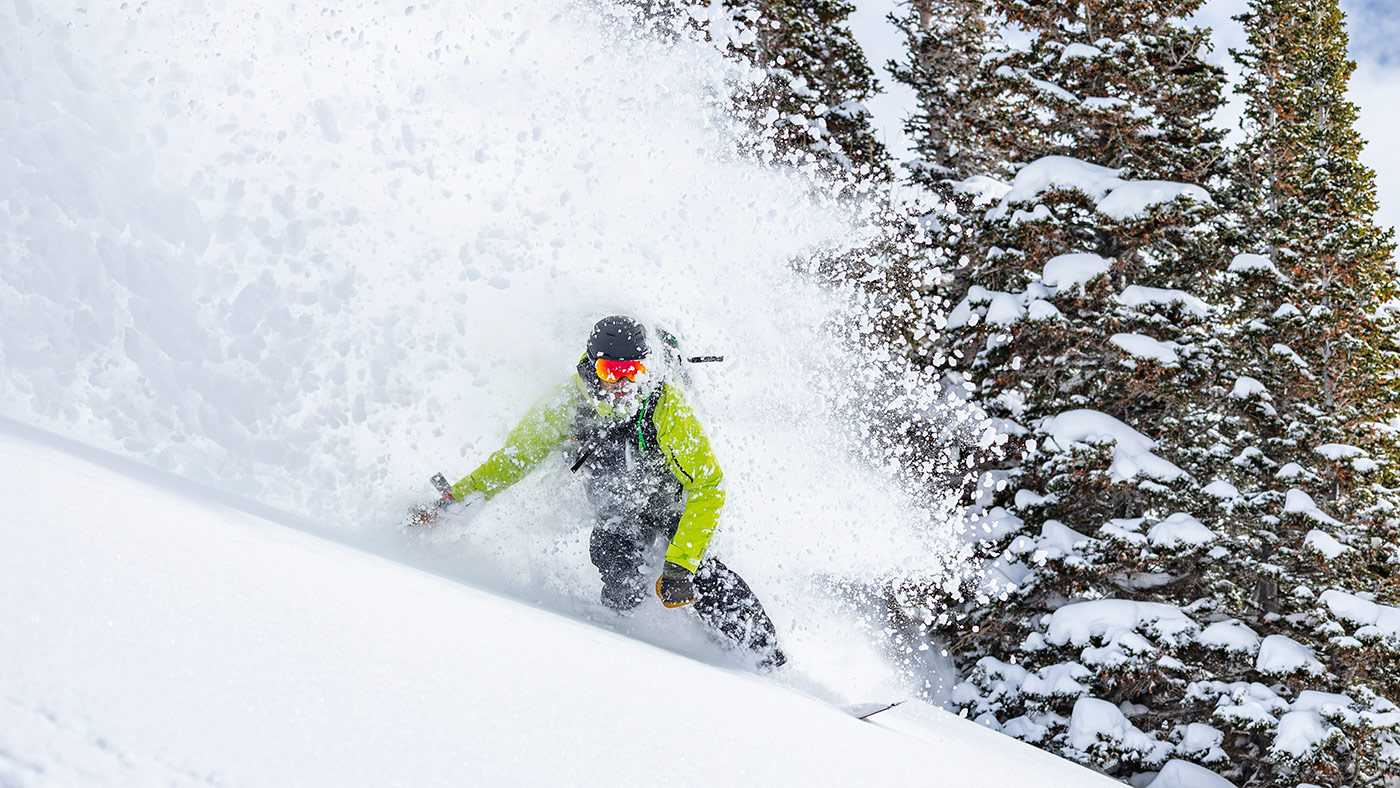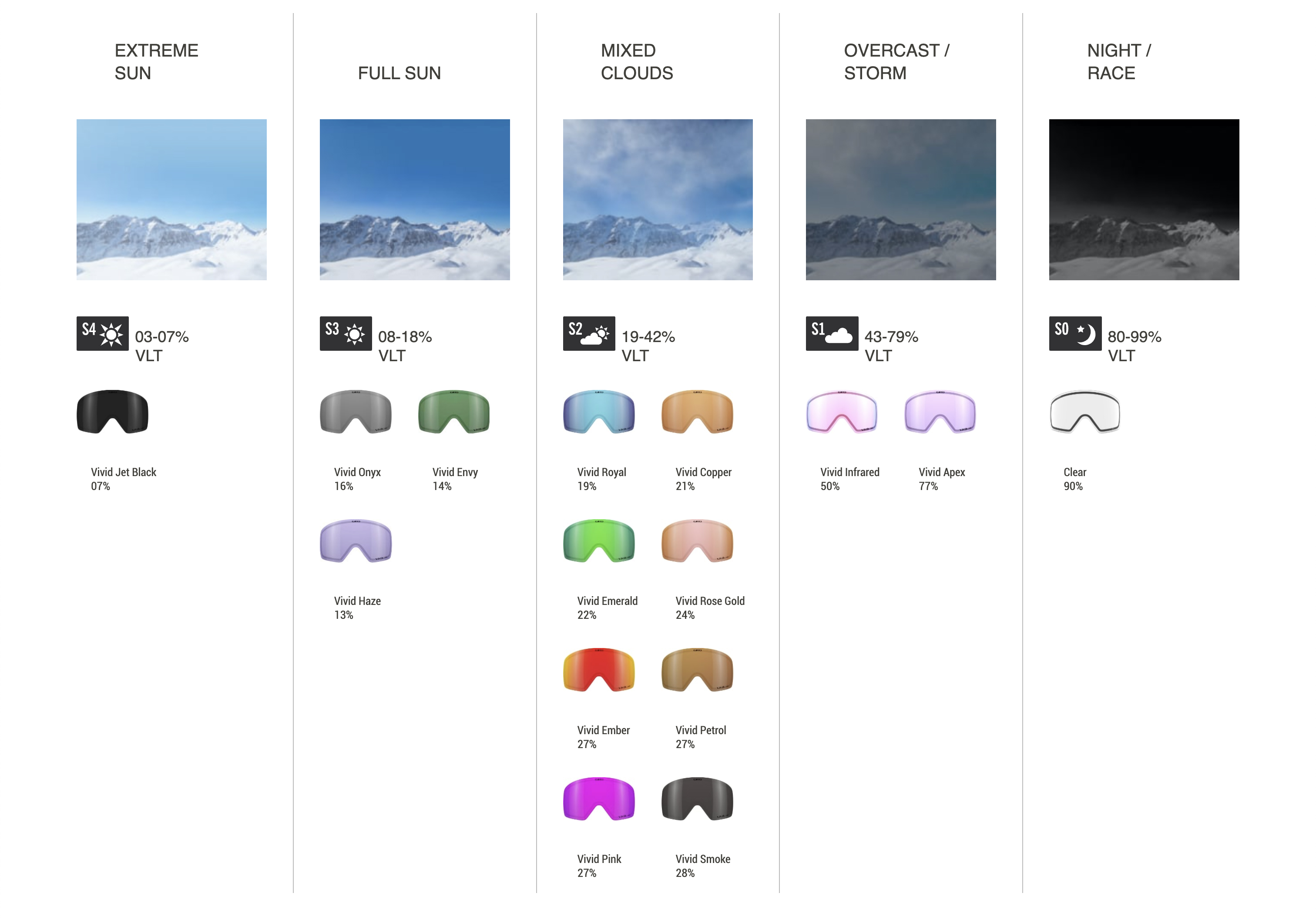
What Does VLT Mean?
VLT, or Visible Light Transmission, is the amount of light that makes it through a goggle’s lens, and it is measured as a percentage.
What Does VLT Percentage Mean?
The lower the VLT percentage, the less light that comes through the lens. The higher the percentage, the more light that comes through.
If it’s a bright, sunny day, you’re going to want to go with VLT percentages in the 08-18% range (full sun) or 03-07% range (extreme sun). Some of Giro’s lens options for full sun include the VIVID Onyx, VIVID Envy, Ultra Black, and Grey Cobalt. Giro’s VIVID Jet Black lens is the best choice for when you’re riding in extreme sun.

Lenses with 43-79% VLT (like our VIVID Infrared, Persimmon, Persimmon Boost, and Yellow Boost) are perfect for overcast or stormy conditions, whereas slightly darker tints with VLT percentages 19-42% are for days with mixed clouds in the forecast.
The higher VLT percentage lenses are therefore ideal for dark conditions. Giro’s clear, yellow, and VIVID Apex lenses fall under this higher VLT percentage category (80-90% VLT) and are the go-to lenses for skiing or snowboarding at night.
What Does VLT Mean For Ski Goggles?
Knowing the VLT percentage of a ski goggle is helpful when considering what weather conditions and/or time of day you will be riding, and this knowledge helps you select the appropriate lens for the job. Making the correct lens/VLT percentage selection will ultimately enhance your vision on the slopes.
What VLT Is Best For All Conditions?
The VLT that is best for all conditions will fall within 19-42%. Goggle lenses within this range are designed for partially cloudy weather where there will be a mix of light conditions of both sun and shadows.
What Are The VLT Categories?
There are five categories of VLT: S4, S3, S2, S1, and S0 (S stands for snow).
These correlate with specific light conditions and VLT percentages listed below:
S4 is the category for goggle lenses that block the brightest light in extreme sun conditions, therefore, these goggles have the darkest tints and a VLT percentage range of 03-07%.
S3 is for full sun (08-18% VLT). The tint will not be as dark as a goggle in the above S4 category, but it will still aid in visibility when riding in sunny settings.
S2 is the middle ground (19-42% VLT) and it is for medium to low-light conditions, such as those partially cloudy days on the slopes.
S1 category lenses are for overcast or stormy days where there’s lower light. These have a VLT range of 43-79%.
S0 means there’s little to no tint on the goggle’s lens, which is best for night skiing/snowboarding. VLT percentage associated with this category is 80-99%.
